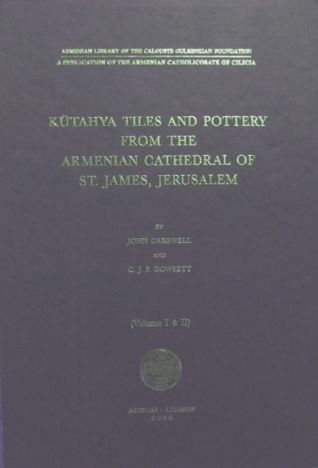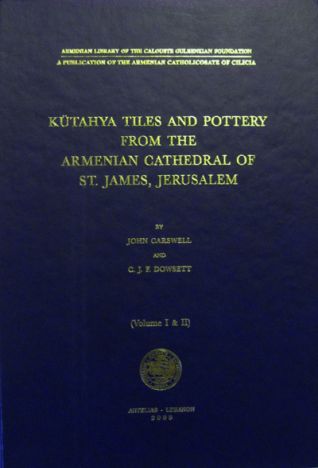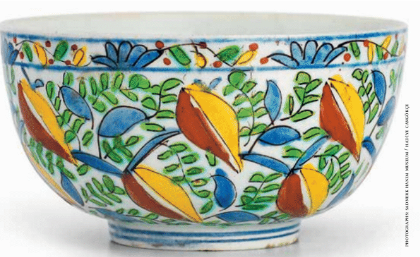Buy or gift a stand-alone digital subscription and get unlimited access to dozens of back issues for just £18.99 / $18.99 a year.
Please register at www.exacteditions.com/digital/cornucopia with your subscriber account number or contact subscriptions@cornucopia.net
Buy a digital subscription Go to the Digital EditionThe ancestral home of Sir Mark Sykes, signatory of the 1916 Sykes-Picot agreement that carved up the Ottoman empire in the Middle East between France and Britain, is a grand Georgian manor open to the public. Born in 1879, Mark was the only child of Sir Tatton Sykes, a Yorkshire baronet who spent a third of the year travelling, and young Mark accompanied him to visits around the Ottoman empire. At the age of 21 he published Through Five Turkish Provinces, the first of several books about the Middle East.
The house suffered a major fire in 1911, and though the contents, including Chippendale furniture, was largely saved, it had to be rebuilt. Captivated by Ottoman styles, Sykes installed the Turkish Room with 2,700 Iznik-style tiles that he bought in Kütahya, designed by the Armenian ceramicist, David Ohannessian, and inspired by one of the sultan’s apartments in the Yeni Mosque in Istanbul. Plans for a hamam were never realised.
Sledmere has 960 acres of parkland designed by Capability Brown, and a farm building now houses the Triton Gallery for contemporary art.
The story of Sykes and Sledmere is told by his grandson, Christopher Simon Sykes, in The Man Who Created the Middle East, and in A Room of His Own, an illustrated article he wrote for Cornucopia 59.
The House is open on certain days between April and October.
Photograph by Christopher Sykes.
Read A Room of His Own in Cornucopia 59.
In the winter of 1887 my grandfather, Mark Sykes, aged eight, was struck down by a disease of the lungs, and was bedridden for several weeks. On his recovery, his doctors prescribed three months of the year in a hot, dry climate, a suggestion that suited his father, Sir Tatton Sykes, a rich and eccentric Yorkshire baronet, who was accustomed to spending a third of each year travelling abroad, his favourite destination being the lands that made up the Ottoman Empire. In the autumn of 1888 Mark accompanied his father to Egypt, the first of many trips they were to make together over the next ten years…
By the time he was 20, Mark, an only child and heir to the large estate of Sledmere in East Yorkshire, had well and truly caught the bug that infected so many young men who visited that part of the world – a fascination with “the mysterious East”, its peoples, its legends, its sights and smells – and in 1898 he set off on his own trip that was to take him through what we now know as Syria and Iraq. The resulting book, Through Five Turkish Provinces, illustrated with his own photographs, was followed by several others, establishing him as something of an expert in that region of the world, and when in 1911 he was elected to Parliament as the Conservative MP for Hull Central, he made “the Middle East”, as he referred to it in his speeches, his specialist subject. This directly led to him being invited, on the outbreak of war in 1914, to join the staff of the war minister, Lord Kitchener, to work on Middle Eastern affairs, and to his becoming one of the signatories of the controversial Sykes-Picot Agreement.
Mark’s love for the Middle East touched his very soul, and when in 1911 his family home, Sledmere House, an 18th-century mansion built in the Adam style, was destroyed by fire, and the decision taken to rebuild it, he was determined that the new house should in some way reflect his passion. The fire, which had gutted the house, leaving only the outer walls, had burned slowly from the roof down, allowing an extraordinary rescue operation that resulted in 90 per cent of the contents being saved, after being carried out by a human chain and deposited on the front lawn.
These were all to go back into the reconstruction, which was also to contain a room inspired by Mark’s travels. His first idea was for a Turkish room, probably influenced by some of the beautiful Ottoman rooms he had seen on his travels, such as the 18th-century house of the Arzeb family in Hama, Syria, which he described as “a triumph of the combined skill of artists, workmen and architect”…



 Issue 66, December 2023
Turkey’s Centenary Issue
Issue 66, December 2023
Turkey’s Centenary Issue

Cornucopia works in partnership with the digital publishing platform Exact Editions to offer individual and institutional subscribers unlimited access to a searchable archive of fascinating back issues and every newly published issue. The digital edition of Cornucopia is available cross-platform on web, iOS and Android and offers a comprehensive search function, allowing the title’s cultural content to be delved into at the touch of a button.
Digital Subscription: £18.99 / $18.99 (1 year)
Subscribe now